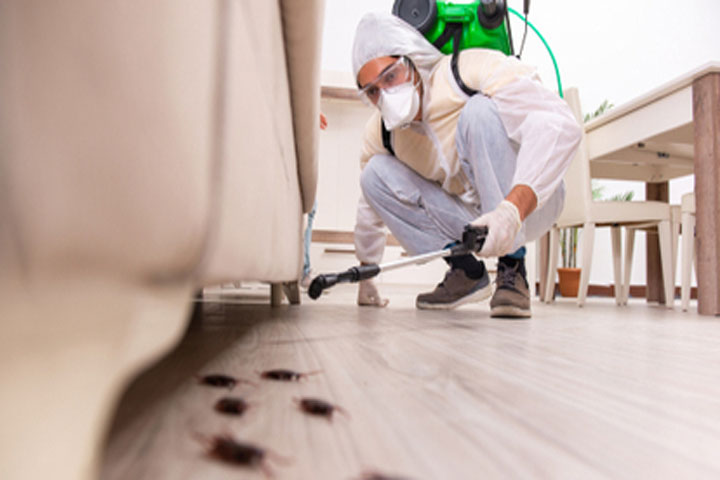Reputable Pest Control Washington DC: Protect Your Home and Service!
Reputable Pest Control Washington DC: Protect Your Home and Service!
Blog Article
Specialist Bug Control Techniques for Long-Term Outcomes
Expert parasite control strategies envelop a thorough approach that begins with an extensive evaluation and evaluation, complied with by specific parasite identification to comprehend their actions patterns. The execution of Integrated Parasite Administration (IPM) principles, paired with eco-conscious treatments, develops the foundation of sustainable insect eradication.
Inspection and Analysis
Upon going into a residential property for pest control solutions, the first step is a complete evaluation and analysis to determine the level of the problem and establish the most reliable treatment strategy. Specialist bug control professionals are educated to meticulously analyze the properties, looking for indications of pest task such as droppings, chomp marks, nests, or any architectural damage. They will certainly additionally examine the conditions that might be bring in bugs, such as food sources, water leakages, or entrance factors.

Parasite Identification and Actions

Additionally, understanding the habits of the determined bug is vital to executing efficient control steps. As an example, understanding where bugs nest, what they eat, and their task patterns can assist pest control experts create methods to remove them effectively. Some pests may be nighttime, while others are much more energetic throughout the day. This knowledge allows for the application of treatments at optimal times for maximum efficiency.
Integrated Parasite Management (IPM)
Integrated Bug Administration (IPM) techniques combine multiple techniques to regulate and protect against insect invasions in a sustainable and eco-friendly manner. exterminator. By integrating approaches such as biological control, environment manipulation, alteration of cultural practices, and using resistant ranges, IPM aims to decrease the use of chemical pesticides
Among the essential principles of IPM is the focus on prevention. This aggressive technique includes monitoring parasite populations routinely to discover any potential problems before they intensify. By recognizing bug problems beforehand, pest control steps can be executed promptly and properly.
Additionally, IPM promotes using non-toxic insect control techniques whenever possible. This can include utilizing natural predators of the pests, presenting beneficial pests, or utilizing pheromones to interfere with mating patterns. By minimizing dependence on chemical pesticides, IPM not just safeguards the atmosphere but likewise aids maintain a balance in the environment.
Environmentally-Friendly Treatments
Carrying out eco-conscious methods pest control in pest control treatments can successfully address invasions while focusing on ecological sustainability. Environmentally-friendly therapies focus on lessening the effect of parasite control methods on environments, non-target microorganisms, and human health.
Another trick aspect of environmentally-friendly therapies is using natural and naturally degradable items that break down quickly without leaving harmful deposits in the setting. Organic insecticides stemmed from plants like chrysanthemums or neem supply efficient bug control while positioning very little risk to non-target types. In addition, using methods like heat treatments or pheromone catches can target certain pests with precision, minimizing the total environmental influence of insect control methods.
Continuous Monitoring and Upkeep
Constant surveillance and maintenance are vital components of reliable parasite control management. Recurring tracking plays a vital function in making sure that bug problems are identified early and dealt with promptly. Regular assessments by trained professionals are needed to determine any kind of signs of pest activity, analyze the performance of previous therapies, and make modifications to the insect control strategy as required. By monitoring pest populations over time, parasite control specialists can track fads, expect prospective issues, and execute preventative procedures to reduce the threat of future invasions.
In enhancement to monitoring, upkeep methods are vital for long-term parasite control success. This includes applying appropriate cleanliness measures to eliminate potential food and water resources for insects, sealing off entrance indicate stop bugs from getting in the facilities, and resolving any kind of structural issues that might facilitate pest invasions (pest control). By integrating ongoing monitoring and upkeep into an incorporated insect administration technique, businesses can make certain a pest-free atmosphere and safeguard their residential or commercial property against pricey damage and health and wellness threats
Verdict
In conclusion, making use of professional insect control techniques such as thorough evaluation and evaluation, exact bug recognition and understanding of their behavior, integrated pest monitoring approaches, environmentally-friendly treatments, and recurring surveillance and maintenance are necessary for attaining long-lasting cause pest control. By executing these approaches, people can efficiently manage insect problems and maintain a pest-free atmosphere in a sustainable manner.
Report this page